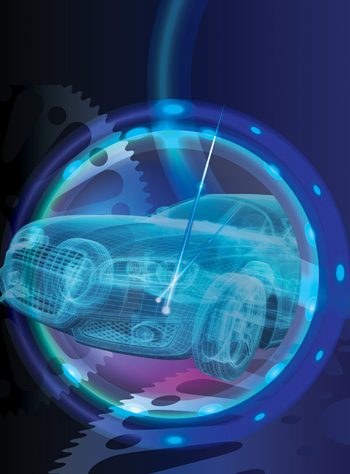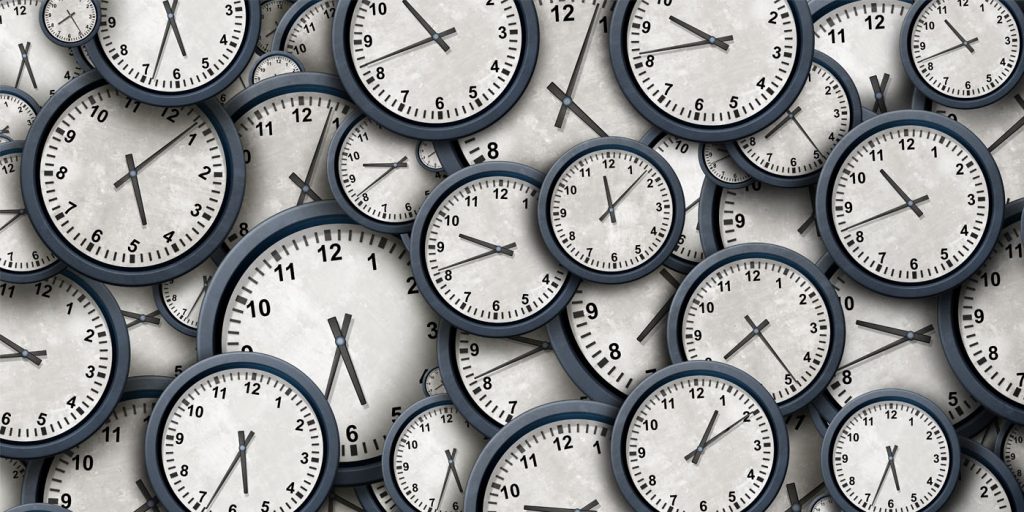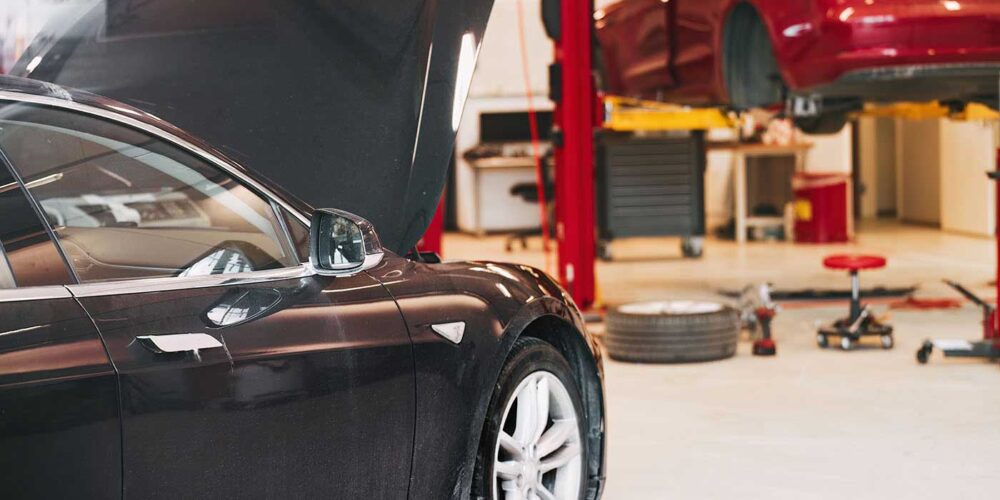 In today’s collision repair industry, reducing repair cycle time is
In today’s collision repair industry, reducing repair cycle time is
everyone’s goal. And it should be! CSI scores depend on shortening
repair times. Insurance relationships and DRP status have cycle time components as well. More importantly, a collision repair shop with low repair cycle time is much more profitable than one that repairs vehicles in a conventional manner. Simply stated, if you can reduce cycle time, you’ll make more money!
So what are the “secrets” of reducing repair cycle time? Is “lean” the secret? Is it “5S” or “Six Sigma?” Well…maybe.
Most of the secrets are simply common sense ways to avoid doing anything more than once. How many times do we have to input estimate information? How many times do we order, reorder and handle parts? How frequently do vehicles have to move within the facility? Do we frequently have to move vehicles into, out of, then back into the paint shop again? How much time do technicians spend walking, looking for something or someone? The secret is to do everything we do to a vehicle only one time.
Secret #1: Measure to Manage
It is frequently said, “To manage something, you must measure it.” Cycle time can be measured! Most computerized management systems have repair cycle time measurement capabilities. You can measure “sub-cycle times,” or
components of overall cycle time, if sufficient and accurate information is fed into the system. Times such as drop-off to estimate completions time, parts order to received time and booth cycle time are sub-cycle times. Improve a sub-cycle time, and overall cycle time should also improve.
Remember, if the dates being loaded into your management system aren’t accurate, the cycle time data generated by the system isn’t accurate.
No management system? Cycle time may be tracked on an Excel spreadsheet. Work with your accountant or someone who is familiar with Excel to build a measurement tool.
Many insurance companies are using rental car days to measure your cycle time. If you’re working with one of those carriers, verify that the reports generated by the rental car company are accurate. Estimators should check the rental car company cycle time report daily to ensure accuracy. Shops have reported significant reduction in reported cycle time as a result of checking those reports on a daily basis.
Secret #2: Schedule
Schedule everything – from estimates to drop-off to delivery. One of the basic tenets of “lean” is to level the workload, which is done through scheduling. Avoid having an office full of customers waiting for estimates by scheduling as many as possible. Avoid the Friday afternoon delivery chaos by scheduling deliveries.
Since almost every vehicle goes through the spraybooth, many find it best to drive the entire facility by scheduling the booth. If you can reasonably get five vehicles through your booth in one day, schedule five vehicles per day. It’s just common sense! But we still see shops schedule everything in on Monday, praying that they will all go on Friday. That “pack ‘em in and piss ‘em off” mentality has no place in a low cycle time facility!
Under the “schedule” category, estimators should schedule their day. Every day, each estimator should review the status of their vehicles, preferably through a “release” meeting. Next, the estimator should physically confirm the status of their vehicles. Finally, the estimator should call all of their customers with updates and schedule delivery
times for the vehicles going that day.
Those who have done this report a drastic reduction in the number of incoming customer status calls, increased CSI and a reduction in workload and stress.
Paint parts off the car. This falls into the schedule area as it’s useful when the metal shop is buried and the paint shop is waiting. Let’s say you’re simply replacing a fender and bumper, blending the hood and door. De-trim the hood and door, and leave the damaged fender and bumper on the car. Prep the door and hood for blending, prep the new fender and bumper. Roll all of them into the booth and paint the wrecked car, blending the blend panels and painting the bumper and fender, inside and out. Many have found success with this concept.
Schedule detail work as well. The detail bays are usually full on Friday afternoon, so detail vehicles when they arrive at the shop. That way, when the vehicle is complete, all that is usually required is a quick wash and dust. Estimating and working on a clean car improves accuracy and quality as well.
Secret #3: Blueprint
The goal: eliminate supplements. Remember, the “secret” is to do everything once. Supplements are an indication of making a mistake on the initial damage evaluation. We, or they, missed something. With supplement ratios in the
60 to 70 percent range, a lot is getting missed!
Once again, the “secret” is common sense. Create a system in which every vehicle is dismantled 100 percent prior to finalizing the damage evaluation. One hundred percent means that everything that will be removed for repair is
removed, before the beginning of the repair.
One shop manager says, “Break all of the clips that are going to break, before you start the repair!” Once they’re all broken, they can be itemized on the damage evaluation as well as all of the R&I, weld burn damage, fluids,
adhesives and everything else we usually forget or just group together as one line on an estimate.
Just like most activities in a body shop, spending a little more time at the beginning of the process makes
the rest of the process go quicker.
Creating a solid blueprint process reduces the need for supplements, increases compensation for non-included items, increases parts order accuracy and reduces repair cycle time. It’s important to involve your team in the development of the blueprint process.
Avoid the tendency to “go back to the way we used to do it” by introducing the concept, then disciplining the
technicians and estimators to follow the new process. Always look for feedback for ways to improve your process, but do not allow people to revert to the comfortable ways of old! It takes 28 days to change a habit. Implement the process, then hold everyone accountable to maintain the new process.
Secret #4: Parts Handling
Parts ordering and receiving processes are a primary cause of cycle time delay. Parts problems are frequently the root cause of those calls to customers explaining that their car isn’t ready as promised.
Developing a good blueprint process is the first step in improved parts handling. Parts taken off the vehicle should be mounted on parts carts in a standard way. Use a “clip card” to mount samples of all clips being replaced. The number of required clips should be noted next to the sample clip.
Fluids, caulking and adhesives should be noted and pulled from stock at the blueprint phase. Note the item number and the amount needed on the damage report to ensure reimbursement for these critical items. Just as important, this ensures the item is in stock and will be on the cart when the technician needs it.
Make one parts order wherever possible. That order should include every part, nut, bolt and clip required to restore the vehicle to a crashworthy, pre-loss condition. Work with your parts vendors to receive only complete orders so that you receive parts one time.
Don’t just receive parts; “mirror match” parts when the order arrives. Techs usually check the parts when they open the boxes at the vehicle. Mirror matching usually requires a bubble-wrapped table with a mirror on the wall. As parts are received, they’re removed from their boxes and placed on the table to be compared to the damaged part that’s being replaced. This process catches damaged or wrong parts up front.
Ask the vendor to remove damaged or incorrect parts from the invoice to avoid having to process returns and credits.
Compare replacement clips to those on the clip card to make sure they’re the correct clips, in the correct number, before they’re handed to the technician.
Parts carts are wonderful tools when used properly. They should have their own process, parking places for those carts holding damaged parts awaiting new parts, parking places in the work stalls and a home for when they’re empty awaiting the next teardown for blueprint. Unfortunately, we frequently see these tools against the
walls or in stalls holding junk.
Secret #5: Build Quality into the Repair
You cannot inspect quality into a repair. Yes, we do need a final QC inspection to catch anything that has been missed, but inspecting at the end is too late. If problems are found, the repair must “go back” to someplace in the shop for correction. “Going back” is an indication of a system failure and is an expensive event.
Every shop must have written repair quality standards for each step of the repair process. Example: “All filler to be finished in 150 grit, paint adjacent to repair to be rough feathered in 150 grit. All filler to be straight and free of pin holes.” With that written standard in place, everyone knows what’s acceptable and what’s not.
The secret to reducing rework is to have the “internal customers” buy the work from the repair person in front of them.
Example: The body technician is the parts department’s internal customer. If the parts order is incomplete or contains damaged or incorrect parts, the body tech should not accept the job until the problems have been
resolved. The paint prepper is the body tech’s customer. If we use the quality standard above, if the repair is not straight, contains pinholes or is finished in 80 grit, the paint prepper cannot accept the repair.
If an internal customer proceeds with a sub-standard repair, the fault is assigned to them. Example: At final QC, it’s discovered that a fender to door gap is bad and there’s a dent in a repaired and repainted panel. We could blame the body tech for sending a poor repair to paint, but isn’t it the fault of the paint department for accepting and processing a poor repair? Create systems to catch problems early. Fixing something on the first day is much cheaper than fixing it an hour before the car is scheduled to go.
Secret #6: Create a Positive and Motivated Workplace
Make work fun. One manager began his journey to the positive workplace when he noticed that he never said a positive word to anyone. He was too busy putting out the daily fires to be nice to his fellow employees! Once he
saw that in himself, he simply used a label maker and printed “say something nice today” on a label, which he placed on his computer screen. That reminder forced him to find someone doing something well and praising them for it.
Today, he uses several cheap or free ideas to keep the shop positive. Example: one contest he constantly runs
is a “catch someone else doing something right” competition. Basically, if you do something above and beyond, you’re given an award statue. But you don’t get to keep it. You have to catch someone else doing something right, and the award is passed along to them. They have to find someone to give the award to, and so on. The award is rotated among the entire team, rewarding people for going “above and beyond.”
Find a way to make work fun! There’s good material out there, beginning with Charles Coonradt’s Game of Work. Also, check out Bob Nelson’s 1001 Ways to Reward Employees.
Secret #7: Fix One Thing At a Time
Everyone has problems. Every collision center does some things twice. So how do you reduce repair cycle time? Cycle time is reduced by fixing one thing at a time. Find an area where cycle time is impacted, correct that issue, then find another area impacting cycle time and fix that one.
The process is called “continuous improvement.” You can read a lot on the subject. The process is frequently included in lean training and reference books such as Liker’s The Toyota Way.
Step one:
Make a list of issues that delay cycle time in your shop. Keep log sheets of problems as they occur. Track these delays for a couple of weeks and you’ll find plenty of reasons production stops in the shop!
Step two: Pick one problem. Look at everything that causes delay and pick one. Maybe it’s a big expensive issue, or perhaps it’s one that’s easy to solve. Just pick one, and only one.
Step three: Determine the root cause of the problem. Simply saying that we don’t hit scheduled delivery dates doesn’t define the root cause. You may have to ask the question “why” five times to find the root cause, referred to as a “5 Why Analysis.”
Example: The problem is that “we are not meeting our promise dates.” Why #1: “Why are we not meeting our promise dates?” Answer: “Because we have to color, sand and buff every car.” Why #2: “Why do we have to color, sand and buff every car?” And so on. You may find that on the fifth “Why?” the issue is excessive dirt in the paint caused by poor paint prep work, a dirty booth and a dirty painter.
Step four: Develop several written processes that should solve that one problem. Include the people in your business to determine what the best possible solution may be for your one problem. Remember: People will support what they help to create!
you can see if your solution works. So test your solution, and if it works, great! That’s the way we’ll do that from now on. If it doesn’t work, great! At least we found that one didn’t work, so let’s try another!
Step six: When the problem is solved, write up the solution as a Standard Operating Procedure (SOP). Hint: Keep it
simple! Make sure everyone is on board with the new process. Management must reinforce and discipline the solution until it becomes “the way we do things here.”
Step seven: Pick your next problem, and do it all over again.
Summary
There really isn’t a secret to cycle time reduction. Yes, there are lots of things people in collision centers do to reduce cycle time, but none of those are secrets. The way to reduce repair cycle time is to begin to measure it. Then institute a program of continuous improvement to reduce cycle time, one problem area at a time. Oh yeah, you never get to stop!














